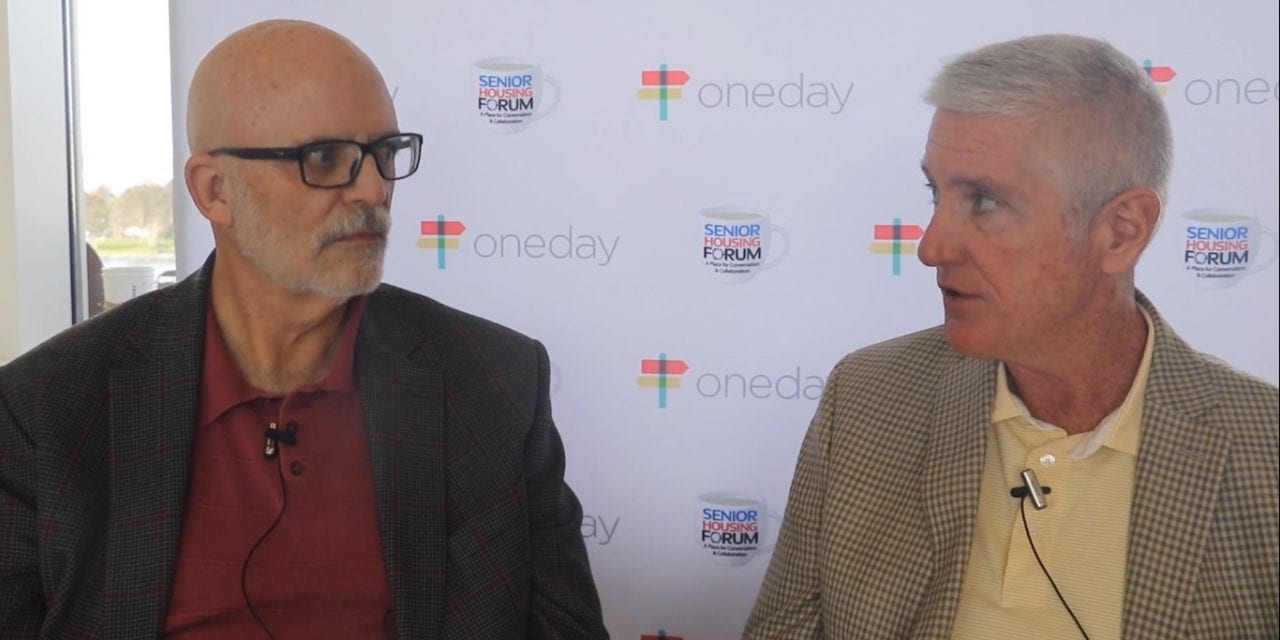At the last NIC Conference, Steve Moran sat down with Ed Scott, MatrixCare’s Executive VP and Chief Revenue Officer, for a Conversations interview.
By Susan Saldibar
At the last National Investment Center for Senior Housing and Care (NIC) conference, Steve Moran sat down with Ed Scott, MatrixCare’s Executive VP and Chief Revenue Officer, for a Conversations interview. The first of that 2-part piece took a look at the partnership between MatrixCare and NIC and how they’ve built out an easier way for operators to share data and pull reports.
But there are more cool things that MatrixCare (a Senior Housing Forum partner) is doing to help prepare operators for what’s coming around the corner. In part 2, Steve asked Ed to elaborate on what they’re doing.
“It’s really about the evolving and changing payment models,” Ed told Steve. “If you’re looking at skilled nursing, PDPM is huge. So, we’re evolving solutions to support that new requirement. But the other things really involve this whole ‘value-based care’ and helping providers compete effectively in a value-based world.”
With that in mind, Ed identifies three key “pillars” that MatrixCare believes are needed to support new requirements such as PDPM and other changing care models.
-
A strong analytics platform. Operators really need to understand how they’re running their businesses by doing things like identifying root cause analyses of issues. This, Ed believes, will ultimately help operators improve the quality of care and outcomes. That’s what the MatrixCare platform allows them to do.
-
Care coordination and transitions of care. MatrixCare has built technologies that help support the operational and financial aspect of transitions of care as patients/residents move from one care setting to the next.
-
Enhanced clinical decision support. This really ties into the issue of staff shortages, something most of us would agree shows no signs of improving. “We have to figure out a way to use technology to help offset the lack of staff resources,” Ed told Steve. “And one way to do that is to use smart technology; what we call ‘enhanced clinical decision support’,” he explains. The idea is to alert someone before an issue occurs so that the staff can proactively care for that person. Using these tools, caregivers can spend their time in ways that drive the best quality of care which, in turn, drives the best outcomes.
“So, we look at those three pillars as absolutely critical to do well and compete in this value-based world,” Ed says. “At the same time [we need to] figure out a way to help leverage those things to bend the cost curve. And everything we are doing involves these three key things.”
But what about all the data that needs to be collected and organized to drive all these great apps? Steve asked Ed what MatrixCare is doing to help those operators who throw their hands up and basically say, “I’ve got all this data and I don’t know how to interpret and actually use it?”
Two MatrixCare products come together to answer that question. “My Analytics”, which provides a really cool way to visualize data in a dashboard format and make across the board comparisons between your communities and competitors. The other product, “My Data” is basically a data mining tool that gets into the weeds a bit more, allowing users to create specialized reports. In other words, as Steve puts it, a “deep dive of the ‘wonky stuff’.”
MatrixCare remains steadfast in its goal: To help operators drive the level of outcomes that they feel people deserve and have come to expect. And that, according to Ed, is what they’ve been busy doing over the last couple of years. “We’re way ahead of the curve,” Ed tells Steve. “Our tremendous customers have helped us with many of these initiatives. And they’re beginning to be the beneficiaries of all the strategies we’ve put into these products.” Now that’s how it should be, don’t you think?
You can watch the entire podcast video here.
For more information about MatrixCare, please visit their website.
Click on the button below to download a PDF copy of this article:










